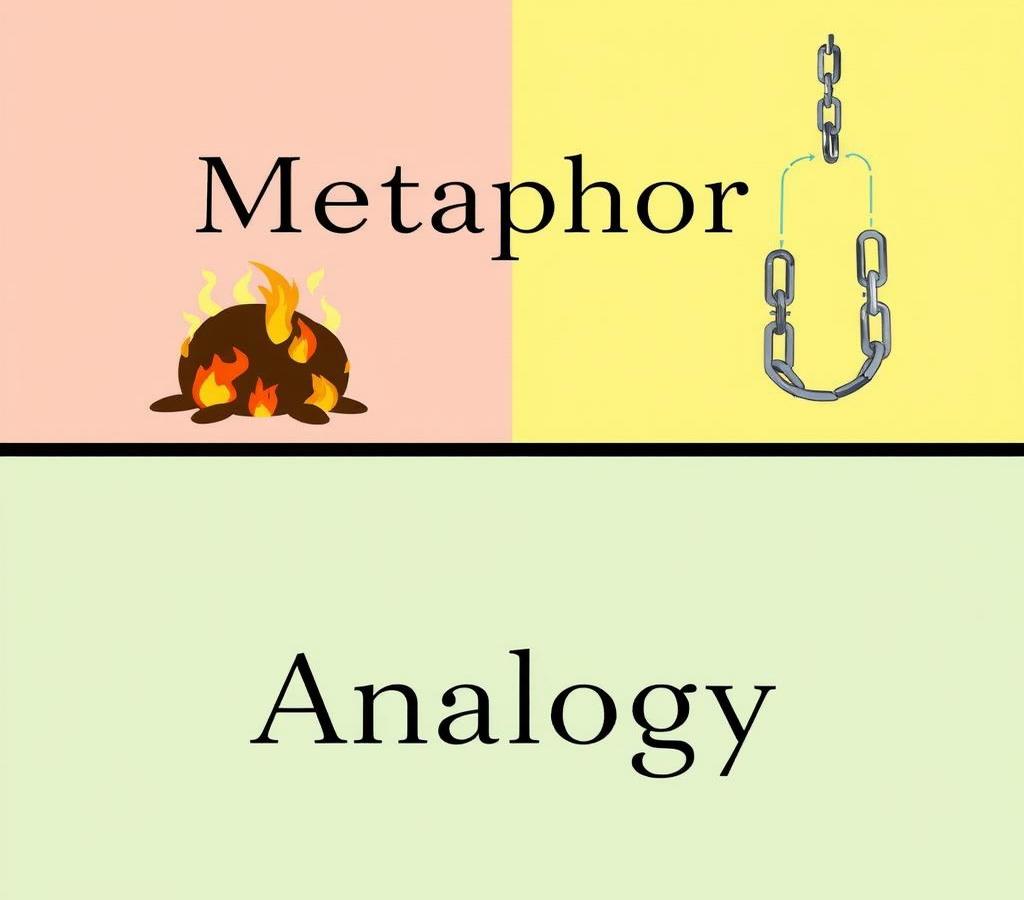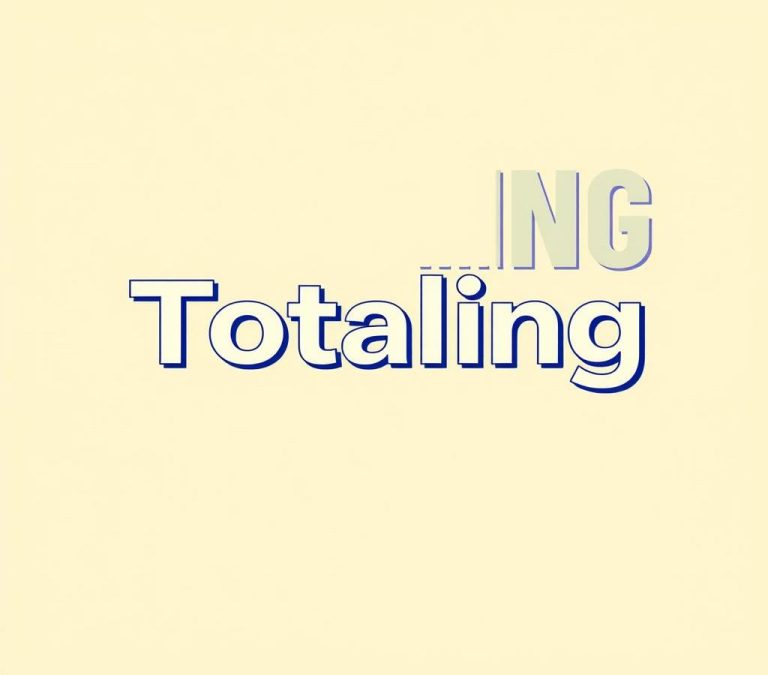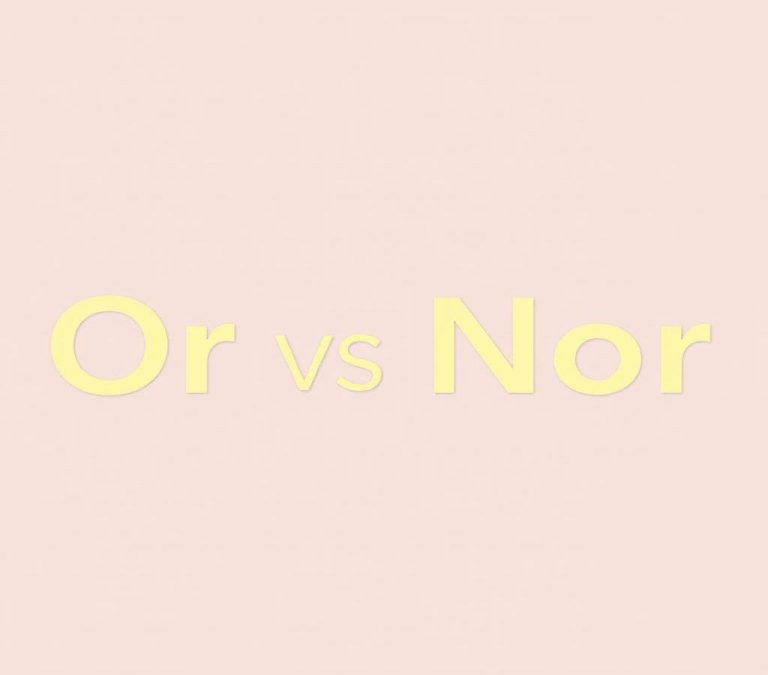Metaphor vs Analogy: Grammar & Usage Explained
When we try to explain complex ideas or concepts, we often turn to figurative language to help make them more relatable and understandable. Two common tools we use are metaphors and analogies. While both help create vivid comparisons, they’re not exactly the same thing. In fact, many people use these terms interchangeably, but they have distinct differences in how they’re used and the impact they have on our communication.
Quick Answer
A metaphor is a direct comparison between two unlike things without “like” or “as” (e.g., “He is a lion”). An analogy, on the other hand, is an extended comparison between two unlike things to highlight their similarities (e.g., “He runs like a cheetah”). In short, metaphors equate one thing with another, while analogies explain one thing in terms of another.
Why There is Confusion
There often exists a great deal of confusion between metaphors and analogies, primarily because both are tools of comparison. At first glance, metaphors and analogies seem to serve a similar purpose; they both aim to create a clearer understanding of a complex concept by relating it to something more familiar. Due to this similarity, many people use the terms interchangeably despite their notable differences. This mix-up typically arises in everyday communication, literature, and even in educational contexts.
What Does Metaphor Mean?
A metaphor is a figure of speech that directly refers to one thing by mentioning another, highlighting the similarities between the two, but not literally. It is often used to emphasize particular qualities and can be a powerful tool in both written and spoken language. For instance, Shakespeare famously used metaphors extensively in his works, such as “All the world’s a stage,” suggesting that life is like a play and people are merely actors.
Metaphors do not use comparative words like “as” or “like”; they assert that one thing **is** another. This direct claim makes metaphors more vivid and can evoke stronger imagery and connections in the mind of the reader or listener.
What Does Analogy Mean?
Analogies, on the other hand, are comparisons that show how two things are alike in several respects, often to explain a complex idea using a simpler one. Unlike metaphors, analogies explicitly state the comparative relationship and often use words such as “like” or “as.” An analogy might say, “Just as a sword is the weapon of a warrior, a pen is the weapon of a writer.” Here, the comparison extends beyond a single aspect, illustrating multiple points of similarity.
Analogies are particularly useful in teaching and persuasive writing because they help to clarify and make connections between concepts. They can simplify intricate ideas by linking them to more straightforward, everyday experiences.
Differences Between Metaphor and Analogy
Differences in Parts of Speech
One fundamental difference lies in their parts of speech. Metaphors function as a type of figurative language within a sentence, often as nouns or phrases. For example, in “Her voice is music to his ears,” the metaphor enriches the meaning without lengthy explanation.
Analogies, conversely, are more extensive comparisons and often form a part of a larger argument or explanation. They are frequently phrases or even complete sentences and can include metaphors and similes within them.
Differences in Implication and Comparison
Metaphors imply a direct comparison by stating that one thing **is** another thing. This intrinsic connection is more about evoking imagery and emotions rather than detailed analysis. For instance, saying “Time is a thief” immediately evokes the sense of loss that time brings, without delving into a detailed comparison.
Analogies require a more elaborate comparison, often explaining the similarities in several points explicitly. For example, “Understanding the human brain’s complexity is like trying to navigate a dense forest without a map.” This not only compares the brain to a forest but invites the reader to think about multiple aspects of the comparison — complexity, navigation, and the need for tools.
Differences in Usage and Context
Metaphors are frequently used in poetry and literature to create vivid imagery and emotional resonance. They can be subtle or overt, but their primary function is to enrich the language and provoke thought.
Analogies are more commonly found in didactic contexts such as educational materials, scientific writings, and persuasive essays. They serve to clarify and illustrate points, making complex ideas more accessible and understandable.
Synonyms for Metaphor
- Symbol
- Figure of speech
- Allegory
- Emblem
- Image
Synonyms for Analogy
- Comparison
- Correlation
- Parallel
- Simile
- Resemblance
Examples of Metaphor vs Analogy in Usage
To better understand the distinctions between metaphor and analogy, it’s helpful to look at specific examples:
Metaphors:
- “Life is a journey“ – This metaphor highlights life’s ongoing progress and the experiences one gains along the way.
- “She has a heart of stone“ – This metaphor suggests a person is emotionally unyielding.
- “The classroom was a zoo“ – Here, the metaphor emphasizes the chaotic nature of the classroom.
Analogies:
- “Finding a good man is like finding a needle in a haystack” – This analogy is used to explain the difficulty and rarity of the task.
- “Just as a caterpillar comes out of its cocoon, so we must come out of our comfort zones” – Here, the analogy draws a parallel between a caterpillar’s metamorphosis and personal growth.
- “The structure of an atom is like a solar system. The nucleus is the sun, and the electrons are the planets revolving around the sun” – This scientific analogy helps explain the structure of an atom by comparing it to the more familiar solar system model.
Conclusion: Understanding the Nuances of Metaphor and Analogy
Distinguishing between metaphor and analogy provides a deeper appreciation and understanding of these two figures of speech. While both serve to illuminate and clarify through comparison, each has its unique function and context. Metaphors are more about evocative imagery and emotional resonance, enhancing the reader’s or listener’s experience through direct assertion. Analogies, in contrast, provide detailed, structured comparisons that work particularly well in explanatory and persuasive contexts.
Recognizing the distinctions and appropriate uses of metaphors and analogies can improve communication, whether in everyday language, literary endeavors, or academic and professional contexts. By mastering the nuanced differences, one can more effectively convey ideas, bring richness to language, and make complex concepts accessible and engaging. Understanding these tools is not just a matter of linguistic finesse, but a key to making meaningful connections in various realms of discourse.







